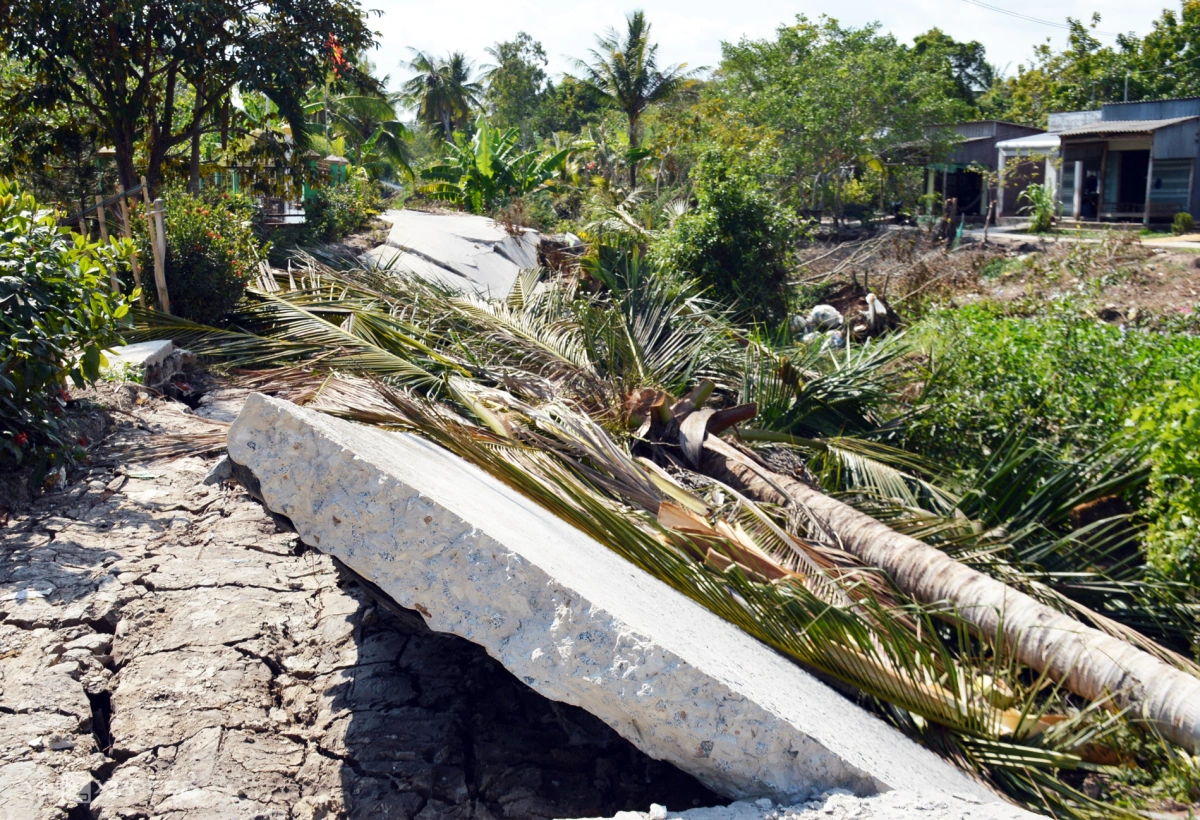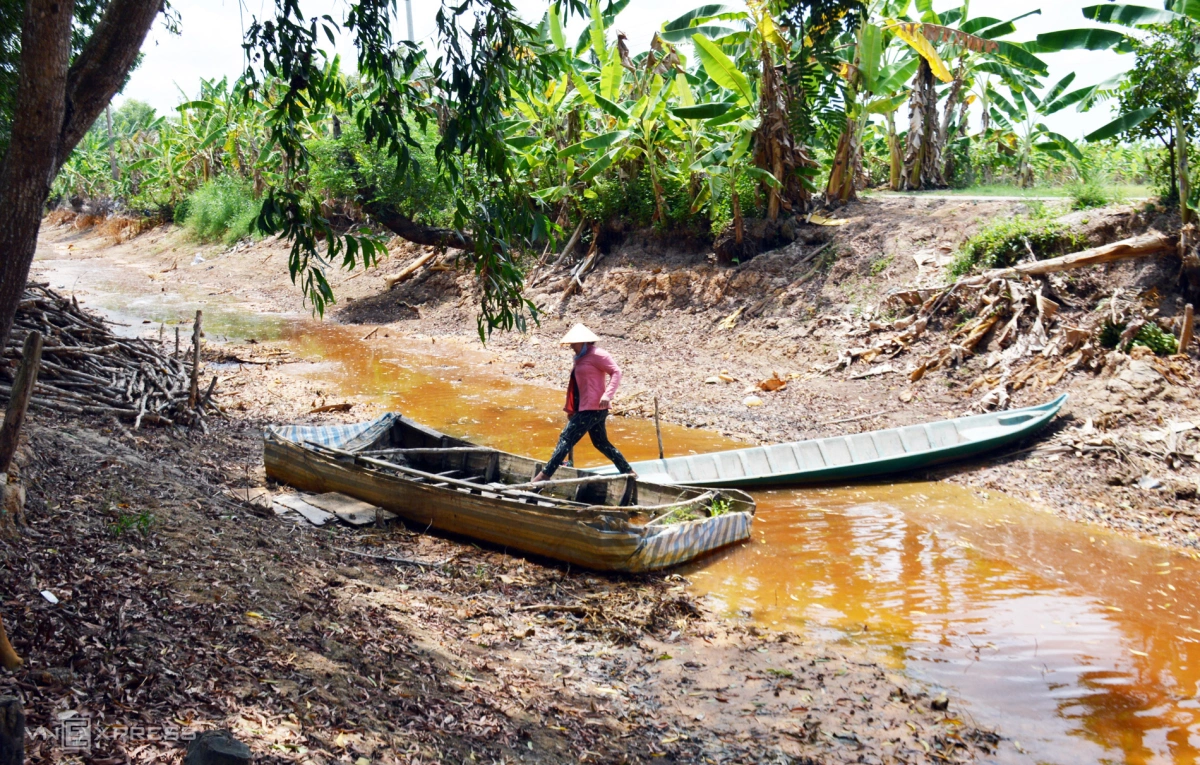Nearly 100 meters of embankment in front of the office of Khanh Hung Commune in Tran Van Thoi District experienced severe subsidence on Feb. 20, with the deepest collapse measured at 2 m.
Since the beginning of the year, the district has recorded about 340 cases of subsidence and soil erosion, stretching a total length of 9 km, and causing damages of over VND13 billion (US$528,000).
The district currently has 264 river and canal routes with a total length of more than 960 km. Most roads are built on dikes, close to rivers and canals, making them vulnerable to erosion.
A soil erosion incident stretching nearly 40 m in length and 3 m in width has pulled the fence of a house into a canal.
According to the district authorities, local agricultural production entirely depends on rainwater.
Yet the rain ended early last year, and a severe drought caused rapid water depletion. The rainy season in southern Vietnam typically lasts from late April to November, with the peak period from June to September.
Additionally, residents have pumped almost all the water into fields to ensure production, leading to the drying up of river and canal systems. This has caused a significant difference in height between the road surface along the river and the water level below, leading to subsidence and soil erosion.
A subsidence area of more than 30 m long at Quang Hao Canal, causing the road surface to break, making it impassable for vehicles.
The road has been in use for around 1.5 years but now has had more than 10 subsidence points, and some sections are completely damaged.
An erosion site in front of Duong Van An's house, which extends over 200 m long.
An, 61, noted that although the road surface has not yet cracked, the soil beneath it has eroded towards the canal, creating a nearly one-meter-deep hole.
He has placed tree branches to warn people about the dangers.
Not far away from An’s house, Nguyen Thi Lieu, 57, had to use a stick to warn others from moving near the edge of a road affected by subsidence.
Lieu said she had noticed the soil cracking last Sunday.
About an hour later, the entire section of soil approximately 20 m long and nearly 6 m wide collapsed into the canal.
Besides erosion, more than 80 canals in nine communes of the district have dried up, exposing the bottom in several places.
The photo shows boats and fishing equipment left ashore in a canal.
Meteorologists have forecasted that water levels in canals across Tran Van Thoi District will continue to decrease significantly in the future, and subsidence and erosion will worsen.
With the canal drying up to its bottom, Dang Hong Dan, 38, can easily cross it by walking over two boats.
She has never seen the canal water deplete as quickly as this year.
This situation makes it impossible for boats to operate, causing difficulties for residents in transporting goods and agricultural products.
A nearly two-hectare rice field was abandoned though the harvest days are near.
Farmers said the lack of water led to decreased yields, and hiring a harvester will only result in a loss.
The dry canal prevents boats from purchasing rice, leading traders to transport rice by motorcycles.
For this winter-spring season, farmers across the district sowed about 29,000 hectares of rice.
For an immediate solution, the district now prunes trees to reduce load on frequently eroded routes; limits water storage when not necessary; and avoids dredging soil, and building houses along rivers, canals, and streams to reduce the risk of subsidence and erosion.
Tran Tan Cong, chairman of Tran Van Thoi District, said that authorities had anticipated the situation and the district had coordinated on proactive solutions for freshwater storage and crop rotation, but these measures do not fully meet requirements. The locality is urgently implementing solutions to minimize damage.
During the annual dry season in the south, spanning November to April, many rivers and canals in Ca Mau suffer from subsidence and soil erosion, with Tran Van Thoi being the most frequently and severely affected area.
Lying in the southern tip of Vietnam, Ca Mau has lost 5,251 hectares to coastal erosion over the last 10 years.
The provincial People's Committee in February last year asked for VND970 million of aid from the state to build more embankments, saying that erosion was a huge increasing threat to local livelihoods.
In October that year, the government announced to give an additional VND4 trillion ($163.85 million) to localities in the Mekong Delta to help them deal with river and coastal erosion.
Most of the sum, coming from the state budget, were allocated to the three provinces of Kien Giang, Ca Mau and Vinh Long, with each of them receiving VND500 billion.


















